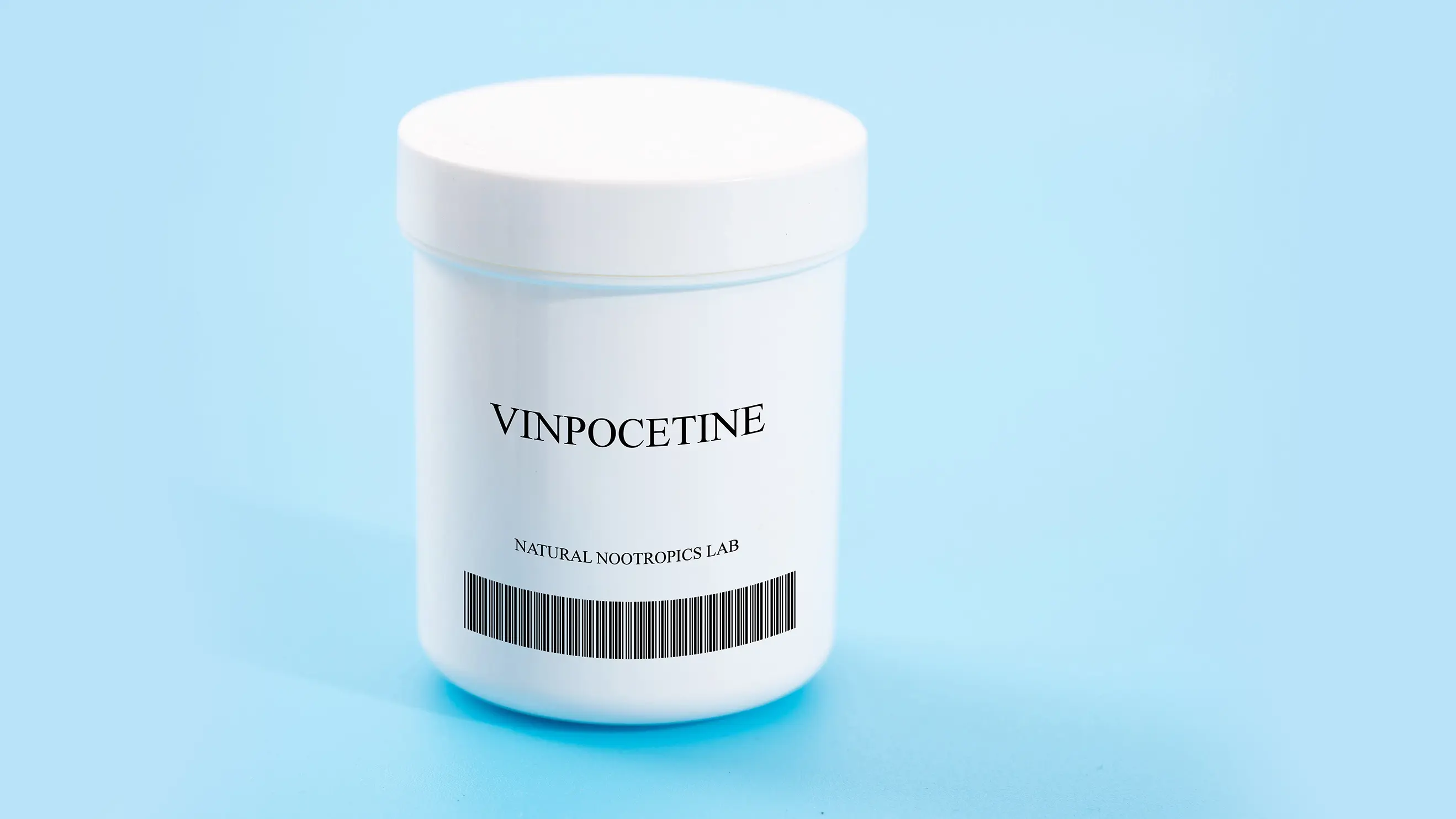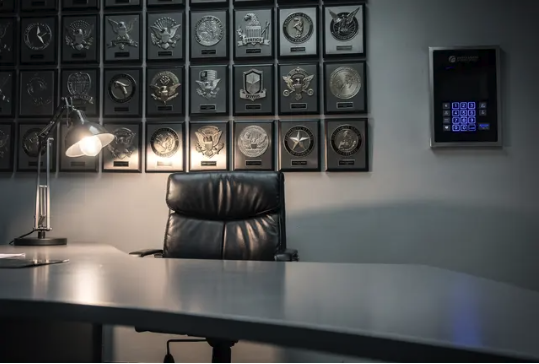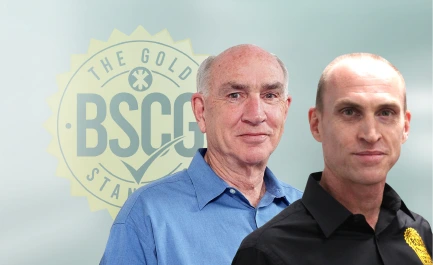
THE GOLD STANDARD IN THIRD-PARTY CERTIFICATION AND TESTING : +1-800-920-6605, info@bscg.org

If you’re after cognitive performance enhancement that may power up your brain, Vinpocetine may have hit your radar. It’s become so popular it was valued at $265 million USD in 2022 and is forecast to hit $330 million by 2028. Before you decide to take Vinpocetine or include it as a dietary supplement ingredient in your product, you need to understand some essential facts.
Vinpocetine is a synthetic derivative of the natural compound vincamine found in the lesser periwinkle plant, also known as Vinca minor. Vinpocetine was discovered in the 1960s, with the first clinical studies in the 1970s, and it was followed by the introduction of the drug Cavinton in 1978 by Gedeon Richter Nyrt in Hungary. Vinpocetine is often marketed as a dietary supplement although as a synthetic substance, it is unauthorized in food supplements in the EU, where the European Medicines Agency considers it an approved drug, and the U.S. FDA suggested it does not qualify as a legal dietary supplement ingredient but still allows it to be sold with a pregnancy warning.
In Europe, Vinpocetine is prescribed as a treatment for cerebrovascular disorders such as strokes and may help with cognitive impairment and memory loss in people with early dementia. Drug names include Cavinton, Vicebrol, and Vincetan. It is not approved in the U.S. as a prescription drug but is found for sale as a dietary supplement in the nootropic category. An Investigational New Drug (IND) application was filed in the U.S. in 1981.
Claims for Vinpocetine include cognitive benefits, improving memory and concentration, and other impacts on the brain. Vinpocetine is thought to work by increasing blood flow, enhancing oxygen and nutrient delivery, and protecting brain cells against oxidative stress. Some research suggests it may also have anti-inflammatory and neuroprotective properties, making it a potential therapeutic agent for various neurological disorders. These properties have piqued the interest of athletes and bodybuilders who may use Vinpocetine for performance enhancement.
It is possible to produce Vinpocetineby converting the vincamine found in the leaves of the periwinkle plant (Vinca minor) as demonstrated in the synthesis described by C Lörincz, K Szász, L Kisfaludy in 1976. However, to mass produce Vinpocetine that you’d buy as a dietary supplement it is likely that it has been synthetically produced from another material like (1R,5S, 12bS)-1- ethyl-1,2,3,4,6,7,12,12b-octahydroindolo [2,3-a] quinolizine-1-carbaldehyde also named Oppolzer’s aldehyde as described in a 2008 European patent application.
So, while Vinpocetine can be produced from vincamine, a compound that appears in nature, it's a man-made chemical, whether it is produced from vincamine or another substance. Vinpocetine is often linked to the beautiful pink and purple flowers of the periwinkle plant, but if you’re taking it, chances are it is probably not natural like what is in your garden, whether it is sold as a drug or a supplement.
Vinpocetine is prescribed as a treatment for cerebrovascular disorders. Vinpocetine works by increasing the blood flow to the brain, and it crosses over the blood-brain barrier increasing glucose transport and leading to the production of adenosine triphosphate (ATP). Vinpocetine impacts norepinephrine and serotonin transmission, and inhibition of phosphodiesterases (PDEs) in the vasculature causes an increase in cyclic adenosine monophosphate (cAMP) and cyclic guanosine monophosphate (cGMP), which leads to relaxation of smooth muscles and vasodilation. These mechanisms are how Vinpocetine may be effective at creating positive health benefits.
Vinpocetine may also be an anti-inflammatory agent that could help treat cerebrovascular disorders. There is a theory that Vinpocetine achieves this by reducing the release of inflammatory cytokines and chemokines into your cells.
Dopamine levels may have implications for treating brain disorders such as Parkinson’s disease. It’s also possible Vinpocetine may impact the availability of dopamine signaling in the brain, as this has been demonstrated in rat studies, but not yet in humans.

Vinpocetine is used by people for two primary purposes, as a clinical treatment of disease and as a dietary supplement. According to research gathered by Priceplow Vinpocetine may increase cerebral blood flow, boost cognitive power, enhance memory, slow cognitive decline, increase reaction time, improve mitochondrial function, or reduce headaches.
As a prescription treatment, Vinpocetine is often used, with varying success and scientific validation, as part of the treatment for the following ailments:
As a dietary supplement, healthy people use Vinpocetine for the following reasons:
These benefits may or may not be accurate and will likely vary depending on the person and amount of vinpocetine taken.

Before you consider taking Vinpocetine, it’s worth considering the side effects because it is a prescription drug in certain countries such as China, Russia, and Germany. Though it’s considered well tolerated by most people, the following side effects may be present when taking Vinpocetine by mouth.
Most people can take Vinpocetine, but pregnant women or lactating mothers are advised by the FDA against using this compound.
Vinpocetine is unauthorized as a food supplement in the EU, and the U.S. FDA said it does not qualify as a dietary supplement ingredient as it is synthetic, but they also continue to allow it to be sold as long as products carry a pregnancy warning as it might cause miscarriage or harm fetal development.
There has been some controversy, like when 23 Vinpocetine supplements were tested, six of the products didn’t have any Vinpocetine present. According to the U.S. NIH Dietary Supplement Label database, there are 387 products on the market with Vinpocetine.
The United States Anti-Doping Agency states Vinpocetine is not prohibited by the World Anti-Doping Agency (WADA), so you will not test positive or have a doping violation for taking Vinpocetine as an Olympic athlete. The same is true in professional sports. However, it is possible that WADA may interpret Vinpocetine to be prohibited based on research that demonstrates Vinpocetine shows potential as an AMPK activator as this category of substance is included on the WADA Prohibited List in Section S4.1 Hormone and Metabolic Modulators. Vinpocetine is on the U.S. DOD OPSS Prohibited Dietary Supplement Ingredients List.
Third Party Certification is Vital for Athletes, Military, and First Responders.Nootropic supplements like vinpocetine often contain other stimulants that are banned in sports, military, and first responder drug testing programs, or they may also be manufactured in the same facility alongside increasing the risk of accidental cross-contamination that could ruin your career or get you banned for a doping violation for years. Third party certification programs, like our BSCG Certified DrugFree program, are available to protect athletes and other consumers from the risks associated with supplement use and banned substances. Please look for certified lots in our database or other third-party certification program databases to ensure the product or lot you have in your hand has been tested and protected.

 YouTube Channel
YouTube Channel
Oliver Catlin Interview
 BSCG BLOG
BSCG BLOG
Military Drug Test Laboratories: Who Performs Testing and Why Standards Matter

 The Catlin Perspective blog widget
The Catlin Perspective blog widget
THE HISTORY OF BSCG